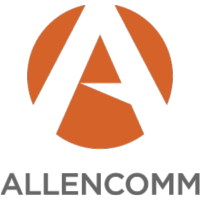
The Right Onboarding For All Employees
You’d have to be swiveling mindlessly on an ergonomic office chair to not notice the shift from in-office workers to more hybrid and remote employees in the last several years. According to a recent Gallup study, five in ten full-time U.S. employees have remote-capable jobs. The study found that six in ten employees with remote-capable jobs want a hybrid work arrangement or they’ll look elsewhere for one. [1]
The 2023 ATD Research Report revealed that 96% of corporations invest in new employee orientation. To stay competitive in the job market, onboarding must be tailored to remote and hybrid employees. Learning leaders who see the shift in employee demographics and build onboarding personalized to hybrid and remote workers will come out ahead.
Why Building Onboarding For Remote And Hybrid Workers Needs To Be Different
Remote and hybrid onboarding is not just a virtual version of traditional in-person onboarding—it’s a fundamentally different experience that requires a tailored approach. Just as virtual meetings differ significantly from in-person ones, onboarding remote and hybrid employees demands strategies that address their unique challenges. These employees often feel disconnected from their teams when participating in virtual training designed for face-to-face interactions. A 2023 ATD Research Report found that over 85% of companies still rely heavily on instructor-led, traditional classroom training, which doesn’t translate effectively to a virtual environment. Simply repurposing in-person content for remote delivery inhibits employees’ engagement and risks leaving them feeling isolated.
“In many ways, designing an onboarding program for remote and hybrid employees calls for the same learner-centered approach we should be using for in-person onboarding,” shares Anna Sargsyan, AllenComm Chief Learning Officer. “However, it’s a different context, and this difference really matters if we’re focusing on the needs of remote and hybrid workers. We need to understand what’s essential to successful performance and what that looks like for a remote team member. From there, we can design and curate an LX journey that will lead to readiness.” For example, AllenComm built an award-winning, hybrid onboarding experience for Delta Air Lines with remote-friendly strategies such as cohort learning, goal setting with tutors, on-the-job observation, and peer/coach feedback.
Onboarding Solutions That Build A Solid Foundation For Remote And Hybrid Workers
With one-third of today’s workforce now preferring fully remote work, according to Gallup, the need to create a dynamic onboarding experience for remote and hybrid employees is no longer a question of “if” but “when.” [1] Onboarding experiences that will help retain these workers need to include three things: an approach to foster connections with coworkers and the company culture, content changes to fit remote and hybrid workers’ needs, and a nimble plan to troubleshoot logistical issues in advance.
Engagement organically takes place with face-to-face onboarding. Remote and hybrid onboarding demands an intentional replacement that incorporates purposeful ways to facilitate social connections and informal networking opportunities. Increased interactivity using reflection activities, breakout groups, sharing activities, simulations of the work environment, quizzes, and polls all help to engage the new remote or hybrid employee.
Analyzing and evaluating the needs of remote and hybrid learners will inform which content will best fit their success in onboarding. By conducting a thorough needs analysis, organizations can identify gaps in employee knowledge, skills, and competencies, and prioritize training initiatives accordingly. This enables them to focus their resources on areas where they will have the most significant impact on employee performance and organizational success. Prioritize the essentials that will increase readiness for day one and success going forward. Break content into smaller, digestible chunks, making sure certain topics and delivery methods are purposefully chosen for the remote employee. Consider embracing a variety of delivery methods for onboarding, including virtual ILT, preliminary microlearning, videos, podcasts, eLearning tutorials, cohort activities, etc.
Avoid the assumption that remote and hybrid workers aren’t willing to interact and get involved. Gallup’s recent survey found that “exclusively remote and hybrid employees tend to have significantly higher employee engagement than on-site workers.” [1] This means that given the tools and support, these employees will connect both with coworkers and the company as a whole.
Proven methods for fostering connection and relationships with coworkers and peers include sharing relatable stories and cross-departmental interviews. One hybrid worker related that meeting employees from other departments made them feel both welcome and part of the company from the start.
Starting off remote and hybrid employees on the right foot with the technology needed to do their job is imperative. Learning teams need to plan ahead and troubleshoot logistical issues in advance before they happen. Relate up-front expectations for when and how employees will receive hardware and software, and make sure to give step-by-step instructions for how to get tech help. Have a contingency plan in place for any unmet expectations or challenges. Proper preparation will hasten the success of the remote or hybrid employee.
Conclusion
Remote and hybrid workers can benefit the company when successfully onboarded and prepared to succeed. This can be achieved by plotting out a path that engages them and helps them connect the dots to see how their job fits into the larger company picture, gives them introductions to people they can rely on, and relates stories that enhance their commitment to the company goals and mission. Organizational learning leaders can simplify by teaming up with a partner like AllenComm, who has a proven track record in personalizing onboarding for a variety of learners.
